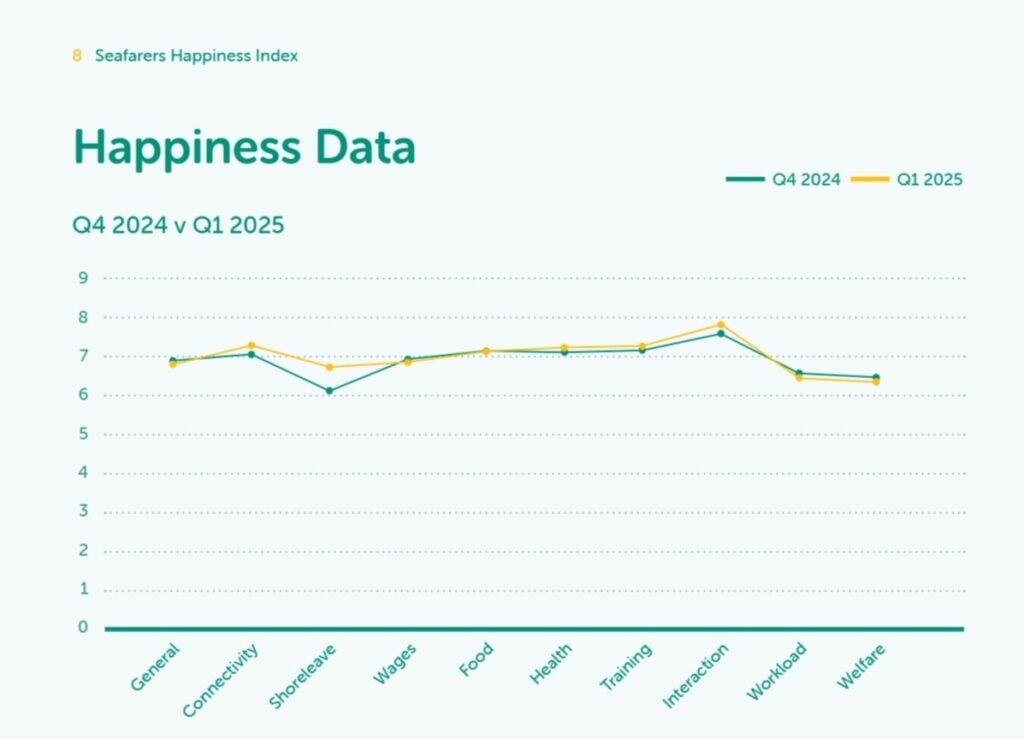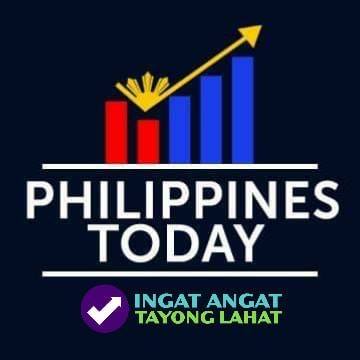Seafarers Happiness Index rises—Filipinos still holding the line

As the Seafarers Happiness Index (SHI) marks its 10th year, the latest report shows a modest rise in global morale. But behind the numbers, Filipino seafarers—who comprise a third of the world’s maritime workforce—continue to shoulder the burdens of a strained industry aboard aging vessels.
The Q1 2025 index, released by The Mission to Seafarers, recorded an average score of 6.98 out of 10, up from 6.91 in Q4 2024. While the slight uptick suggests some stability, the report highlights growing pressure on crews—particularly on older ships—where limited resources, shrinking manpower, and mounting workloads are steadily eroding morale.
Maintenance demands loom large. According to the report: “Many reported having to implement triage systems for maintenance tasks, addressing only the most urgent repairs while routine upkeep falls behind. This pattern creates cascading technical challenges that seafarers described as ‘overwhelming’ and ‘demoralizing,’ affecting both operational safety and personal wellbeing.”
This stress weighs especially heavily on Filipino crews. Of the more than 489,000 Filipinos aboard international vessels in 2022, many continue to face cramped living conditions, inadequate healthcare, exploitative contracts, and even trafficking—despite existing labor protections.
Training remains another weak link. The SHI reveals growing demand for realistic, scenario-based instruction aligned with actual onboard risks—critical during emergencies at sea.
Workload, isolation, and limited shore leave also emerged in the survey. Even when shore leave is technically allowed, logistical hurdles and tight schedules often prevent crews—particularly Filipinos—from stepping ashore, deepening their confinement and emotional exhaustion. The lack of reliable internet connectivity only compounds the homesickness.
Maritime Industry Authority (MARINA) administrator Sonia Malaluan has long recognized this predicament. At the National Conference of Guidance Counselors and Student Affairs Officers of Maritime Schools in December 2024, she urged the integration of mental wellness into seafarer training, calling it operationally critical, not just personal.
Malaluan cited the ongoing global review of the Standards of Training, Certification, and Watchkeeping for Seafarers (STCW), noting that among 22 areas under revision are the inclusion of mental health, gender sensitivity, and measures against bullying and harassment.
“The STCW Convention and Code must align with efforts to prevent bullying and harassment in the maritime sector,” she said, stressing the need for psychologically safe workplaces.
She also cited the Magna Carta of Filipino Seafarers (Republic Act No.12021), signed by President Ferdinand Marcos Jr. in September 2024, as a step toward safeguarding rights and preparing Filipino seafarers for a changing global industry.
President Marcos has repeatedly emphasized the importance of Filipino seafarers to the national economy. In his 2023 Seafarer Summit address, he reaffirmed the Philippines’ title as the “Seafaring Capital of the World,” calling for unified efforts to modernize the sector.
“I am confident that, with all of us working together, we will navigate the turbulent tides ahead and chart a course towards a stronger and sustainable tomorrow for seafarers and the global community,” Marcos said.
While such commitments are welcome, labor advocates say structural issues remain unresolved. Filipino seafarers still face precarious employment, with ongoing reports of contract manipulation and forced labor—especially among crews on older ships flagged under jurisdictions with lax enforcement.
Despite the hardships, many seafarers point to camaraderie and the pride of supporting their families as the reason they stay at sea. But as the maritime industry eyes a more resilient and sustainable future, experts stress that equity—not just efficiency—must anchor the course ahead.



0 Comment